Last updated on April 15th, 2022
A wheel is a circular block of hard and durable material. A wheel coupled with an axle serves as a simple machine that can be used for various purposes, including transporting heavy loads. According to Merriam-Webster, a wheel is defined as: a circular frame of hard material that may be solid, partly solid, or spoked and that is capable of turning on an axle.
1. Surprisingly, the wheel does not have a very long history in that it was not created immediately after humans began making tools. It was likely invented about 5,000 years ago by the ancient Mesopotamians.
2. The importance of the wheel cannot be emphasized enough. It is, after all, the key component to early (and even late) human progress. However, there were other inventions that came before it, such as the sewing needle, woven baskets, and rope.
3. The wheel was not initially used to make carts move. Instead, it was used as the potter’s wheel to make clay pots and plates. Researchers came up with this conclusion, thanks to the discovery of the oldest axle in the world, which was not used on wheels for carts or some means of transportation but for clay-making.
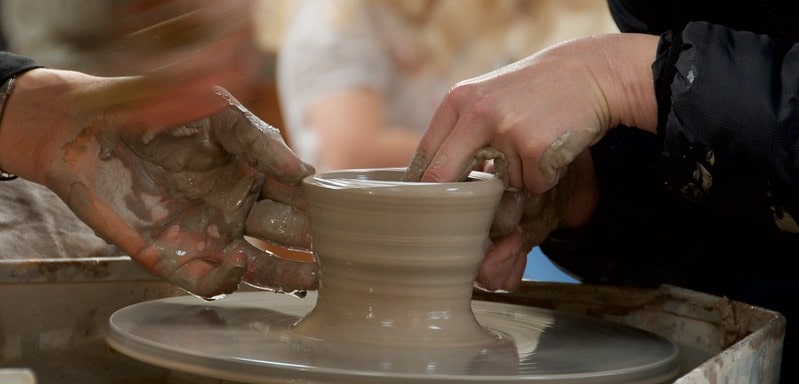
4. Before the wheel, humans used inclined planes and rollers – likely small logs cut from trees laid out parallel to each other, over which an object is pulled or pushed. This was the technology that helped build some of the world’s most famous structures, including the Egyptian pyramids and the giant stone statues on Easter Island. Although effective, rollers made the work slower and more laborious. Did you know that the Great Pyramid at Giza has over 2 million stone blocks, each with an average weight of over two tons?
5. After the axle, the first wheels did not appear on any mode of transportation but on a child’s toy. In 1880, an archaeologist discovered such a toy buried in a child’s tomb in Mexico. The toy was the figure of a coyote.
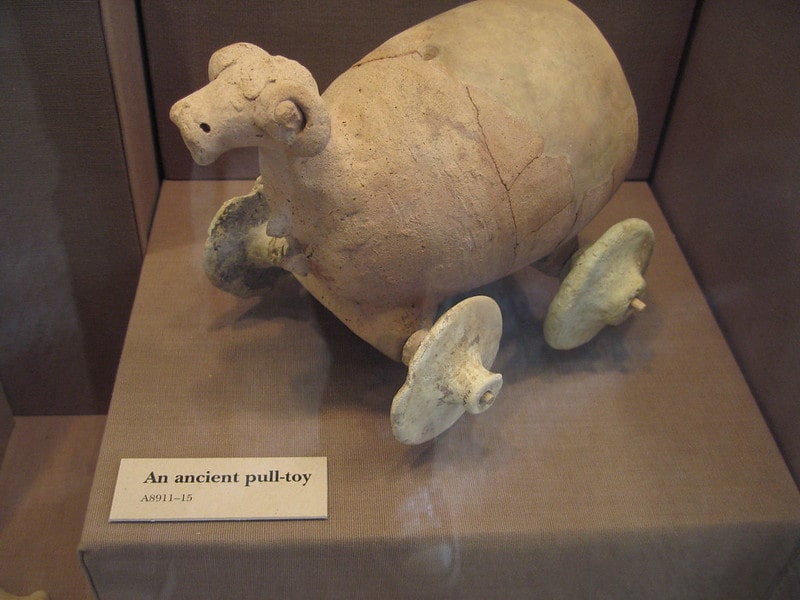
6. Scholars estimate that it took another 300 years after wheels were used in pottery and toymaking for them to be applied to transportation.
7. The first wheels were cut whole from trees or made with smaller pieces that were shaped and rounded where needed. Later, cutouts were made through the solid piece/s of wood to make it lighter and easier to turn.
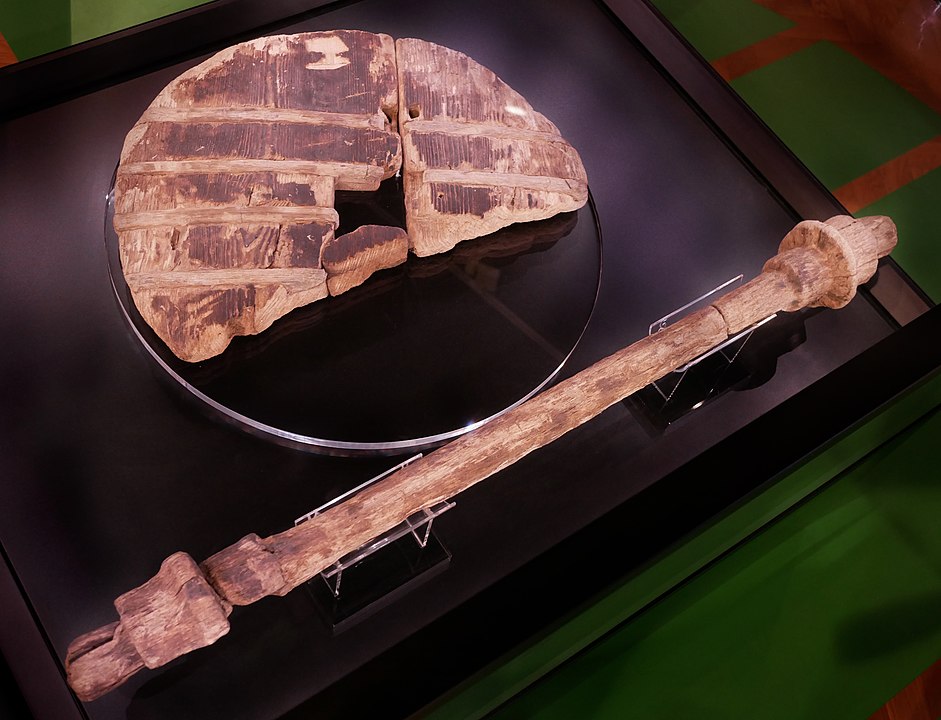
8. The oldest wheel in the world (so far) was discovered in 2002 in Slovenia. The wooden wheel is estimated to be between 5,100 to 5,350 years old. It is believed to have been part of a two-wheel cart used in prehistoric times. The wheel, which is made from oak and ash, is 5 cm thick and has a radius of 70 cm. Its axle, estimated to be the same age, is made of oak and 120 cm in length.
9. The use of the wheel for larger machines such as carts may have been slowed down by the challenge of constructing a matching axle. After all, an axle has to fit perfectly in the center of the wheel to make it effective. Other factors such as strength, friction, and rigidity also had to come into play.

10. The domestication of animals may have delayed the use of the wheel for transportation. Larger animals used for pulling carts may have been difficult to tame and only became domesticated much later.
11. The invention of the wheel transformed the lives of early humans. The new technology not only made transporting objects and products easier and faster but it also made it possible for people to work better. Instead of relying on groups of people to work the soil, for example, it became possible for individuals to use large animals and for individual families to rely on their own labor.
12. The wheel also allowed better migration. Wheels made transport of material possessions (including houses) possible, which meant groups of people could travel long distances for longer periods.
13. We may have an idea about the earliest users of the wheel but we really do not know who invented it. What scholars agree on is that someone (or several, simultaneously) in the Middle East or Eurasia developed the technology. The design of the wheel, of course, spread quickly and was soon adopted by different communities and societies.
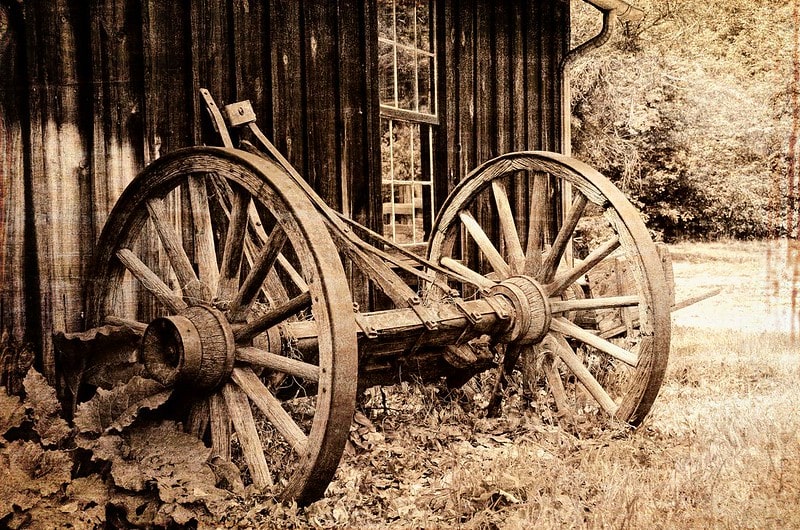
14. The invention of the axle is of nearly as much importance as that of the wheel. When turned, the axle also turned the whole wheel and helped save energy and effort in the process.
15. The oldest potter’s wheel was discovered in Ur, a city in Iraq. This wheel is estimated to be from 3129 B.C.
16. Scholars believe that the earliest vehicles may have been four-wheeled, as evidenced by depictions on ancient pottery that may date back between 3420 to 3385 B.C. The Polish Bronocice pot, for example, along with clay tablets discovered in Iraq, showed illustrations of four-wheeled devices.
17. Interestingly, two-wheeled vehicles came after four-wheeled transportation. The earliest known depiction of this simpler vehicle has been dated between 3402 to 2800 B.C.

18. The spoked wheels are believed to have been invented in Anatolia or Turkey. The spokes made the wheels significantly lighter and thus faster, making them ideal for many uses, including warfare.
19. The first wheels to utilize iron rims were found on Celtic chariots that date to 800 to 450 B.C.
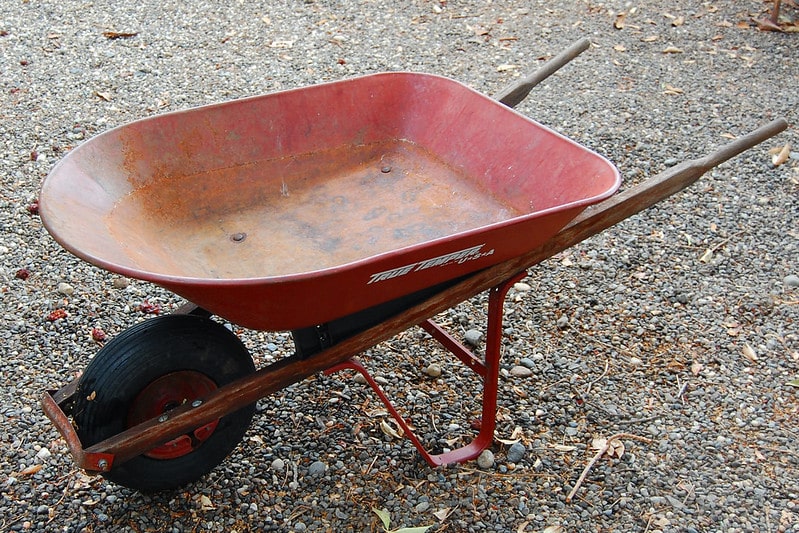
20. The earliest known evidence of the existence of the wheelbarrow is dated to around 150 A.D. It was discovered in a tomb in the Sichuan province of China.
21. Hamsters were not the first animals on wheels. From the 16th century to the 19th century, dogs were used for turnspits in the kitchens of Britain. The dogs running on wheels helped turn the meat over the fire so it would cook evenly.

22. The invention of the water wheel is accredited to an ancient engineer named Vitruvius who died in 14 C.E. The vertical wheel was used to grind grains and supply water for drinking and crop irrigation.
23. In 1893, the World’s Columbian Exposition was held in Chicago to celebrate the arrival of Columbus in the New World 400 years prior. A grand structure was designed and built to help commemorate the affair. It became the centerpiece of the event, standing at 264 feet. It was christened the Ferris Wheel after its designer, an engineer named George Washington Gale Ferris, Jr. It was meant to rival France’s Eiffel Tower, which was built in 1887.
24. The Ferris Wheel was not the first of its kind. Similar contraptions were already invented in Bulgaria as far back as the 17th century. These were made with chairs strapped to a rotating scaffolding that was manually turned. These were called “ups and downs” or “pleasure wheels”.
25. The first U.S. patent for a wheel was granted on August 26, 1791, to James Macomb from New Jersey. It was a water wheel with a hollow center that was meant for hydropower mills.
26. The spinning wheel was invented more than 2,500 years ago in India. It contributed to faster and more efficient weaving and fabric-making. A spinning wheel is a device for spinning thread or yarn from fibres. It was fundamental to the cotton textile industry prior to the Industrial Revolution. It laid the foundations for later machinery such as the spinning jenny and spinning frame, which displaced the spinning wheel during the Industrial Revolution.
27. The flag of India has a wheel at its center. The wheel, inspired by the spinning wheel, has 24 spokes. The spinning wheel was added to the original design of the flag in 1921 because of its association with Mahatmas Gandhi, who encouraged Indian self-reliance by producing their own fabrics using local fibers. The wheel was later replaced by the Dharma Chakra, also called the Wheel of the Law. Because the chakra is associated with emperor Ashoka, the wheel is also known as the Ashoka Chakra. The Dharma Chakra is meant to symbolize movement, where there is life and progress, as opposed to stagnation, where there is only death and nothingness.
28. The wheel has become one of the most common symbols across different cultures and societies. It has become a metaphor for repetition or cycles and a symbol for strength, health, and success.
29. India is not the only country to feature a wheel in its flag. The Romani flag has a Dharma Chakra of its own, featuring a wheel with 16 spokes.
30. Wheels significantly reduce friction, which makes them incredibly indispensable for moving and transportation. When wheels turn, they dig into the soil or ground as they rotate and turn on their axles. If a device on wheels is being pushed or pulled, the effort to make this happen is greatly reduced because friction is present only at the meeting point of the axle and the wheel.

31. Wheels are also force multipliers because they provide leverage. Because the rim of the wheel has a greater turn distance than the axle, there is more force present at the axle compared to the rim or outer wheel. This is why carts with larger wheels are easier to push or pull.
32. A wheel on its own is not considered a machine. However, if it is paired with an axle, the combination can be considered a simple machine.
33. Although “wheels” and “tires” are used interchangeably, they are not actually the same. Wheels are round objects that usually come with an axle and a hub. A tire, on the other hand, is the part of the wheel that is usually made of rubber. Wheels are used to roll while tires are used to create traction.

34. Another word that is used interchangeably with wheels is rims. A rim is actually just a part of the wheel and not the wheel itself. The rim is the cylindrical outer edge that keeps the tire snug to the wheel.
35. There are tires invented to handle cold climates. These are called Nokian tires and they were invented in Finland. Nokia, the company that makes them, created them in the 1930s.
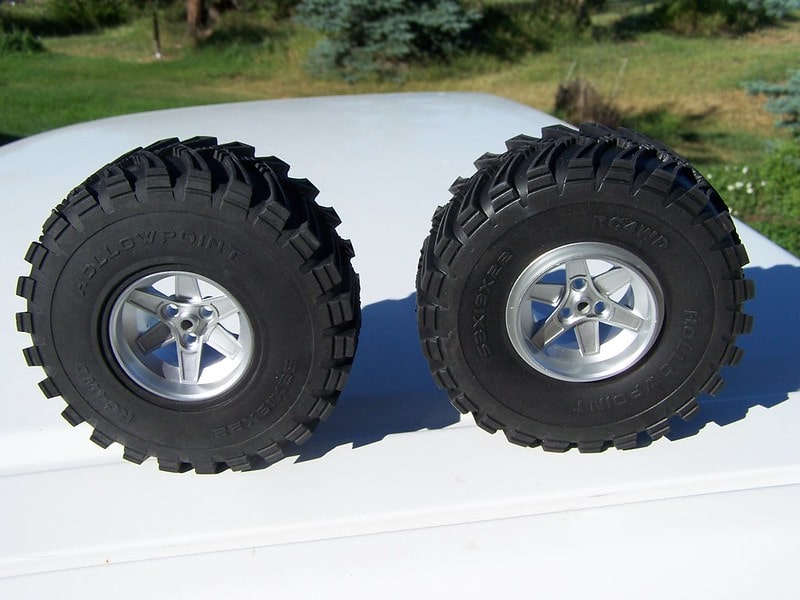
36. The world’s largest tire manufacturer is LEGO, the toy company. It churns out about 320 million tires every year – all designed to fit the toys they also produce.
37. The expression “fifth wheel” was an actual wheel or just a portion of it. This wheel was made of two parts that rotate on each other. It provides added support so a carriage would not tip. This part is considered unnecessary, which explains the meaning of the term today.
38. Another common expression is “the third wheel”, usually referring to a person or thing who is unneeded in a situation. The origin of the phrase is the extra wheel found on four-wheel wagons or coaches.
39. The “wagon wheel” effect is the phenomenon wherein a wheel spinning forward at high speed appears to spin backward. This is usually observed in movies and is due to the rate at which the scene is captured by frame, which is usually 24 frames a second. Any gaps between each captured image are filled by the brain, which creates the backward-moving effect.
40. At one point in history, the wheel was supplanted by camels as the preferred mode of transportation in northern Africa and the Middle East. Blame this on less-than-ideal road conditions, along with the invention of the user-friendly camel saddle.
. . . continue reading on the next page
